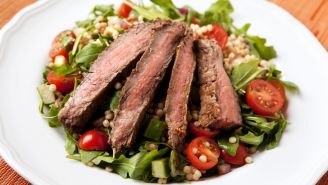Heart-shaped boxes of chocolate are everywhere on Valentine's Day. The intriguing question, debated by scientists for decades, is whether the candy inside helps your heart.
Popular mythology holds that chocolate is good for your heart, and that dark chocolate is better than milk chocolate. If chocolate does turn out to be an effective heart medicine, we foresee no problem getting people to comply with the prescription. In fact, the average American already consumes 14 pounds of chocolate per year.
How It Helps
When it comes to chocolate and the heart, the focus is on the dark stuff. Small, short-term studies suggest dark chocolate has some potential heart health benefits, including decreased blood pressure and blood clotting, increased blood vessel health, and improved LDL cholesterol.
Of these, chocolate's effect on blood pressure has gotten the most attention. In most studies, short-term use of dark chocolate causes blood vessels to expand, which in turn modestly reduces blood pressure. A study of heart transplant recipients also found that blood flow to the heart increased after eating dark chocolate.
We agree that dark chocolate can lower blood pressure in the short term. But we don't really know if this translates into a long-term health benefit. Some studies suggest that people who regularly eat chocolate live longer and have a lower risk of heart disease than those who don't enjoy chocolate, while others find no such benefit.
The Magic Ingredient
Dark chocolate is rich in a group of antioxidants called flavanols -- believed to be the "active" ingredient that confers chocolate's cardiovascular advantage. Experimental studies demonstrate several potential benefits of flavanols, including lowering blood pressure and reducing blood clotting. That's why we give the nod to dark chocolate over milk chocolate for its potential heart benefits.
But there's a catch: Neither the color of the chocolate nor the cocoa content (frequently touted on the packaging) necessarily correlates with its flavanol content. Flavanols impart a bitter taste, so manufacturers often remove them when processing the cocoa. Because flavanols may be the most important health feature of chocolate, we'd like to see them listed on packaging. But methods for processing cocoa are closely guarded trade secrets, so manufactures aren't likely to share this information anytime soon.
Calories Count, Too
Here's our verdict: In small amounts, chocolate can be part of a heart-healthy lifestyle. But don’t forget about the calories. A standard chocolate bar contains 200 to 300 calories. And a single piece of premium chocolate from that heart-shaped box can have up to 70 calories. So, enjoy your dark chocolate in moderation.
Marc Gillinov, M.D., and Steven Nissen, M.D., are the authors of Heart 411: The Only Guide to Heart Health You'll Ever Need (Three Rivers Press). Both are affiliated with the Cleveland Clinic.
Medically reviewed in October 2019.






